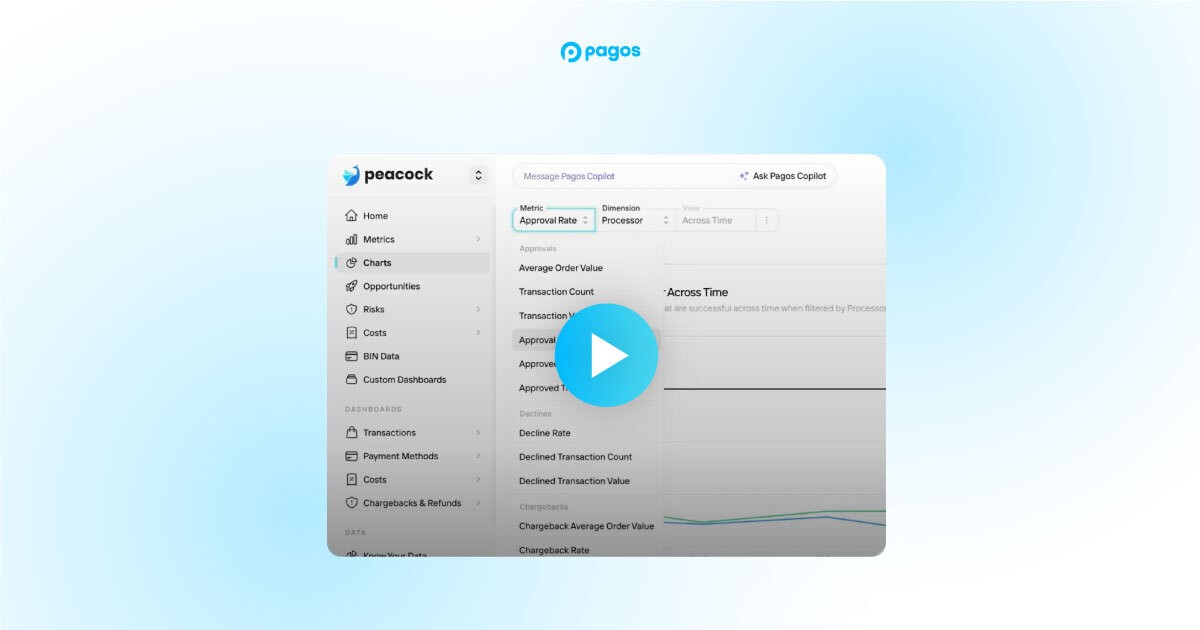Industry
April Showers Bring...Bi-Annual Card Brand Operating Regulation Changes
In just a few weeks, card brands (also referred to as card networks or card associations) will release the latest versions of their biannual operating rules. Card brands release these rules and regulations every spring and fall to adapt to new laws and market influences. At Pagos we’re on a mission to help drive awareness around payments, including the way the payments industry evolves and adapts over time. In that spirit, we’ll be publishing a series of blogs in the coming weeks to provide insights into the new operating rules.
Side note before we continue on: Don’t worry if you haven’t heard some of the terms used in this post before. If an industry term is a hyperlink, click it to view a full definition. We’re here to help make the complex nature of payments simple!
Who do these changes impact?
If you recall from the Card Payment Lifecycle, there are multiple players in the payment ecosystem. Let's add a little more definition to what you already know.
Card associations or networks are made up of financial institutions that have agreed to a set of processing rules. These financial institutions are “members” of the card association network. Members may have a type of customer called a “sponsored member”—these entities often provide vital services to facilitate the identity management, privacy, and security needed to authorize, capture, fund, and refund payment events between merchants and cardholders. Card associations require both members and sponsored members to enforce the biannual operating rules.
Changes announced in these rule publications affect merchants differently depending on the:
Merchant’s standard industrial codes (SIC)
Merchant’s merchant category codes (MCC)
Transaction types (card present transactions with EMV-chip cards, ecommerce, transactions processed using various authentication methods or versions, etc.)
Thoroughness of the data passed in authorizations and settlement
In addition to these considerations, what type of processor model a merchant uses, and what types of fees they charge will all play a role in how these changes impact their financial and operational processes.
What types of changes can we expect this spring?
That’s the big question. While it’s expected that there will be some price-based announcements around interchange or processing fees, recent international legislative and regulatory changes will likely play a role in what card networks will announce.
Monetary laws and regulations influence card associations in a variety of ways, from how currency conversions are handled to the more complex challenges of money laundering and cyber security risks. When governments believe commerce exchanges may present a risk to the general population, they implement controls. Similarly, the global nature of commerce often requires new controls, reporting, or notifications to optimize privacy and security requirements across regions and jurisdictions. These upstream changes then flow into payment processing and all the way down to the merchant level.
As you can see, there is a lot that goes into the process by which card brands set rules, and the biannual card network publications are very lengthy and complex. For example, in the fall 2021 release, one brand regulation had over 700 pages or rules. Another brand was 277 pages long.
How can we prepare for these changes?
The rules announced have different effective dates and requirements for members, sponsored members, and merchants. To add additional complexity, it’s not always clear how impacted members or sponsor members will implement the required changes, and merchants often don’t know how these changes will impact them or their customers.
This is the type of complexity that Pagos flocks to! In early April, we’ll publish highlights of the announcements with key details and effective dates. Then, in the weeks that follow, we’ll take the most critical changes and provide deeper insights and advice to help merchants assess how these changes may impact their operations and financial results.
Our blogs are not intended to be a substitute for discussing these changes with your processors, and at some point, this is exactly what we recommend you do. For now, sit tight, but expect some big changes on the horizon and be prepared to be proactive (vs. reactive). Use the insights we’ll provide in the Pagos blog to help you plan and prepare to take flight into the ever-evolving world of payments!
We've provided the content in this blog post solely to inform and educate. Pagos doesn't provide legal advice and this content shouldn't be taken as such. You're strongly encouraged to consult with your payments partners and legal teams before implementing any changes based on the content in this post.
By submitting, you are providing your consent for future communication in accordance with the Pagos Privacy Policy.





